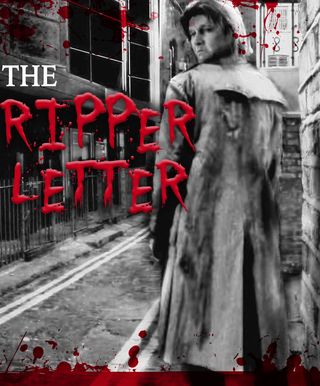Packing Heat: Writing about Sex
Author ponders how to create and embellish effective erotics.
Posted Jul 24, 2016

Source: K. Ramsland
Will my mother read this?
Will readers think this is what I like?
Will anyone but me think this is hot?
Those scenes that succeed for me might say something about me, but they also affirm word choice, delivery, and the ability to pull me into the characters. So, there’s a lot to build before you get to the sex act. Sensuality can be achieved in many ways, and we probably won’t succeed universally, since sex is so personal. But whether sex is important to a plot or just an enticing sideline, we must figure out our approach.
I’ve read novels that start with characters coupling. Because I don’t know them, the scene falls flat. I’ve also read novels where no matter how much the sex partners grind and bounce and beg, the scene lacks energy. This means it lacks credibility. And I want to skip over such scenes.
Unless you’re just writing porn, you need to make readers care. Elizabeth Cratty, who wrote How to Write a Sizzling Sex Scene, says that emotional intensity is the key to making sex scenes pop. This means longing, a sense of connection, and vulnerability. “When you’re writing a sex scene,” she says, “both parties bring to the union their entire histories.”
There are no formulas. Some authors bring characters right up to the moment of unclothing and then cut away. Others are highly graphic. Some use clinical words; others think you should never do that.
Go on any blog that gives advice about how to write a sex scene and then read through the comments. They will range from “thank you, this really helps” to “you’re so wrong. My sex scenes use blah, blah, blah…” I once read a novel in which a specific image had a strong impact. It kept coming back to me as the hottest moment in the book. To my surprise, the author said that if she could do it over, she wouldn’t use that image. So, who really knows?
I’ve seen advice that we should do only what feels comfortable to us. By putting our character in motion, we discover our boundaries. But here’s the thing: I cut my teeth on the multiple drafts of D. H. Lawrence’s Lady Chatterly’s Lover, some of which were shockingly crude to a teenage girl. I’ve read the Marquis de Sade books, I wrote a companion to Anne Rice’s erotica, and I’ve written nonfiction about all kinds of BDSM, including the kinky sex of necrophiles. But I still find it difficult to decide how much I want to describe in a sex scene in my fiction.
I can imagine it all, but I find that packing heat into words diminishes the impact. So, am I just not finding the right words or the right ways to string them together?
For me, the kind of embodied emotion that draws characters together is an intensity that keeps growing, with the hint that they will become more. It’s a force that they struggle against but also facilitate in a way that triggers conflicted feelings. Eventually, the craving becomes too strong to block. It’s a raw, commanding force that undermines the characters’ calculations but still gets them to their goals.

Source: K. Ramsland
I was going to include a scene here to illustrate what I mean, but it doesn’t work. I could tell you how she slid her fingers down the curve of her side, and how her breath shortened and heartbeat increased as heat flushed through her. Or her first impression of the character with whom she will eventually entangle. But taking these scenes out of context is like deflating a balloon. If you don’t know her, you won’t feel her.
So, I think that a good sex scene is not necessarily about the words. It’s about emotional rhythms that play covertly in the background. We need to figure out how to fuel this while also guiding the overt plot. When Dianysus does have her “entanglement,” it happens at a time, in a place, and for reasons that surprise her, and yet the thrust of energy that propels her has been there all along. That’s what makes it work. (I think.)
How do we accomplish this? Whether we outline or write more spontaneously, I think we must remain alert to multiple layers of emotion. This will arise from our character development, so creating character profiles, with motivations, goals, and flaws, is part of the process. This means focusing on what they desire, how they deal with being thwarted, how this changes them, and how it impacts their momentum.
Writing dynamic sex scenes could be similar to the fluid genius of good improvisation. An NIH-funded f-MRI study on jazz musicians revealed that when they played their extraordinary riffs, the part of the prefrontal cortex that engages self-awareness shut down: the musicians lost their internal censors and moved boldly into the music.
“It’s a remarkable frame of mind,” says Johns Hopkins researcher Charles Limb, “during which, all of a sudden, the musician is generating music that has never been heard, thought, practiced or played before. What comes out is completely spontaneous. What we think is happening is when you’re telling your own musical story, you’re shutting down impulses that might impede the flow of novel ideas.”
Writing a memorable sex scene needs more improv than formula, more exploration of the titillating unknown. Still, we also know that improv experts have generally practiced for many, many hours. They know their instruments and methods so well that they can totally indulge. They can enter what psychologist Mihaly Csikszentmihalyi calls the state of flow. This is a complete absorption in a given activity that produces a sense of effortless concentration. The moment is exciting and alive, inwardly attuned. We are one with the work.
Becoming good at writing sex scenes might involve such uncensored focus. So, like musicians who know all their notes, it might help to make a list of the sensual and sexual words that appeal to you, and then bathe in them. Immerse. Get so familiar with them that when it’s time to work up some writing improv, you’re already intimately connected to the most useful words. You can choreograph your sex without having to think.
I think I’ll go try that now.

Comments
Post a Comment